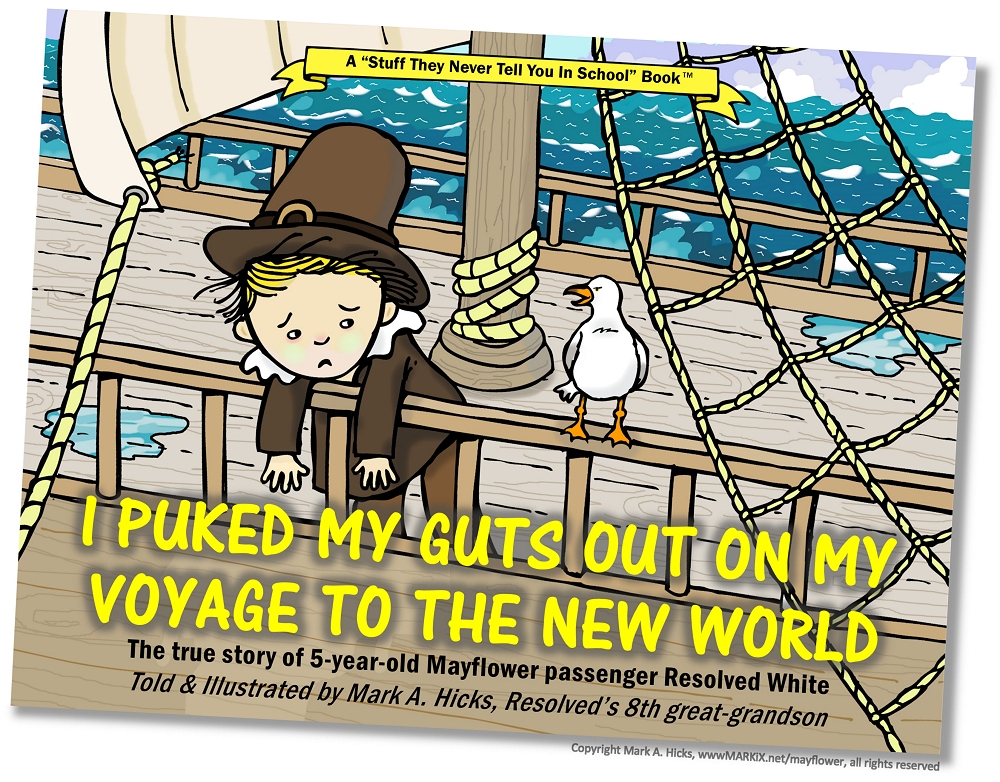|
William White, ninth great-grandfather |
||
|
During the 66-day voyage, the Pilgrim passengers were crowded below deck in cold, damp, and very smelly conditions. Surviving on measly rations of dried meat, hard dry biscuits, and, believe it or not, beer. All got seasick as dogs. The puke pail became the Pilgrim’s best friend. The Mayflower was not a passenger ship. It was a cargo vessel, constructed to haul wood, fish, wine barrels, and other goods. And the ship was designed mainly for short trips along the European coastline. The design made for difficult sailing against the strong prevailing westerly winds of the North Atlantic. At times the Mayflower was blown backwards. |
|
|
|
Forty-five of the original 102 passengers died that first winter at Plymouth. And that included my ninth great-grandfather, William White, and my 23-year-old first cousin (10x removed), Dorothy Bradford. Susanna White, my ninth great-grandmother, was one of only four women to survive. It wasn’t all bad though; Susanna was pregnant during the voyage. She gave birth to Peregrine White, my eighth great-granduncle, on board the Mayflower shortly after arriving in the New World. Peregrine survived. Both he and Resolved lived past 80. --- Postscript. Something to contemplate: Many famous people (Clint Eastwood, Sally Field, John Lithgow, Noah Webster, and others) are descendants of William Bradford and his second wife. They would not exist if my cousin, Dorothy (May) Bradford, had not died. Dorothy "fell" off the Mayflower and drowned in the icy waters while the ship was anchored off Cape Cod Harbor. How Dorothy just happened to "fall" of a ship that was anchored in calm waters has never been explained.
|
||
|
* I use “New World” with a touch of irony; I have Native American ancestors on my father’s side (DNA: yes. Exact tribe: it’s complicated). Some of my family was already part of the “New World.” |
||

